1 November 2010
Tavşanlı Zone field trip, part 4
Posted by Callan Bentley
Picking up where we left off… I was telling you about the field trip I took through Turkey’s Tavşanlı Zone, a tectonic suture zone between fragments of continental crust that accreted during the closure of the Tethys Ocean.
Day 2 of the trip dawned and we broke fast, and then headed out to a bizarre locality, an exposure of the accretionary complex near the village of Gümüşyeniköy. This is a spot that field trip leader Aral Okay discovered while doing his PhD research in the area. It’s a batch of limestone strata that have been down a subduction zone and then come back up. Because the geothermal gradient in this “deep but relatively cold” tectonic scenario supplied so little heat, the recrystallization and metamorphism of these rocks is quite odd. In fact, it is unique in the world.
What we saw there were limestone layers whose centers were recrystallized into coarse pink aragonite. But the upper and lower parts of each bed were purple-gray calcitic micrite. Why the prograde aragonite nucleated in the center of the beds and grew outward is a mystery. The aragonite crystals are quite large; thin section work by Aral and colleagues shows them to be several centimeters in length! Check out a few images of these rocks, with a Turkish 1-lira coin (about the same size as a U.S. quarter) for scale:
This bizarre rock unit suggests very low metamorphic temperatures: possibly less than 200°C at pressures of more than 7 kbar! If you look at a metamorphic facies graph, that suggests we’re dealing with conditions right on the boundary between “blueschist” and “not found on Earth.”
Note the bedding-perpendicular white extensional fractures, filled with calcite.
All of the above pictures were of slabs of this rock quarried by local villagers and set up in a big stack for use as building stones. Here’s an in situ outcrop, on the wall of one of these quarries. You can see that the limestone layers are reasonably coherent, and separated by layers of rapidly-weathering shale.
In some places, the layers are folded, like here. Note the flint nodules at the upper right:
Along with the bedding-perpendicular calcite veins that indicate bedding-parallel extension, there were some other undulations to the bedding that looked like incipient boudinage (mullion structure):
On the other hand, how closely packed these “mullions” are in this thick slab suggests that perhaps it’s an accordion-like buckling instead. That would imply the opposite of bedding-parallel extension: that would be caused by compression. Poking around the outcrop pondering these structural mysteries led me to have a series of fun conversations with Alan Smith of Cambridge, a very clever and insightful fellow. Talking with him was one of my finest memories of this trip.
Clearly some differential compression has taken place, as evidenced by the folding. Here’s a meso-scale synform/antiform pair:
My sneaker is for scale. Here it is again, annotated with bedding traces in white, the antiform in green, and the synform in orange:
A short distance away was an outcrop of pillow basalts, a big fluffy pile of them. Here’s the bread-crust-like rind of one pillow, weathering out in three dimensions:
My field notebook (18 cm long) provides a sense of scale for the upper hemisphere of this much larger pillow. Note the radiating series of joints, a diagnostic feature of basalt pillows:
Someone was excited to fluff the pillows:
Here’s Thomas Zack, also excited to visit the submarine floor of the Tethys Ocean, albeit a few million years after it was subducted:
Besides the obvious pillow, Tomas is also holding a handful of samples which bear sodic pyroxene, another indicator of the high-pressure, low-temperature conditions these rocks enjoyed. A closer look:
These basalts also show lawsonite in veins and amygdules. Our high-pressure, low-temperature journey will continue with Part 5.



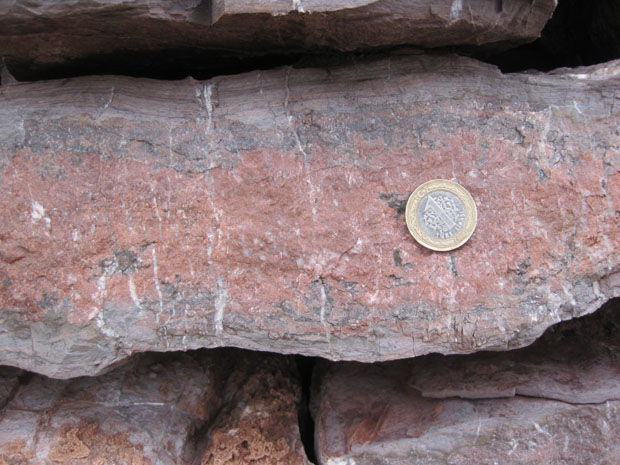


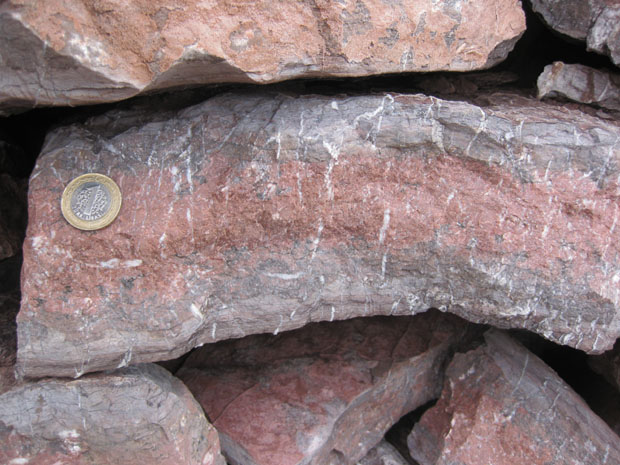
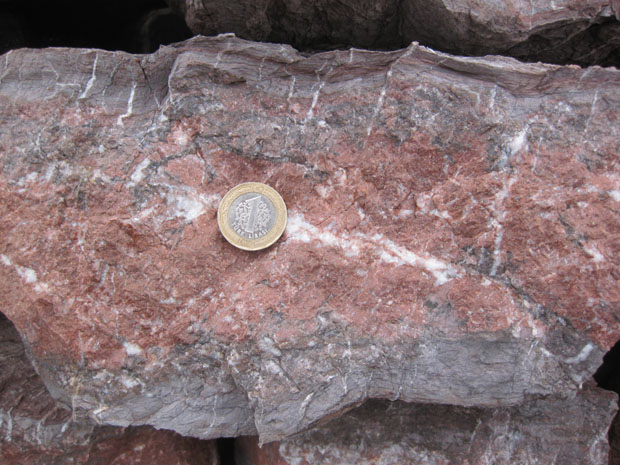
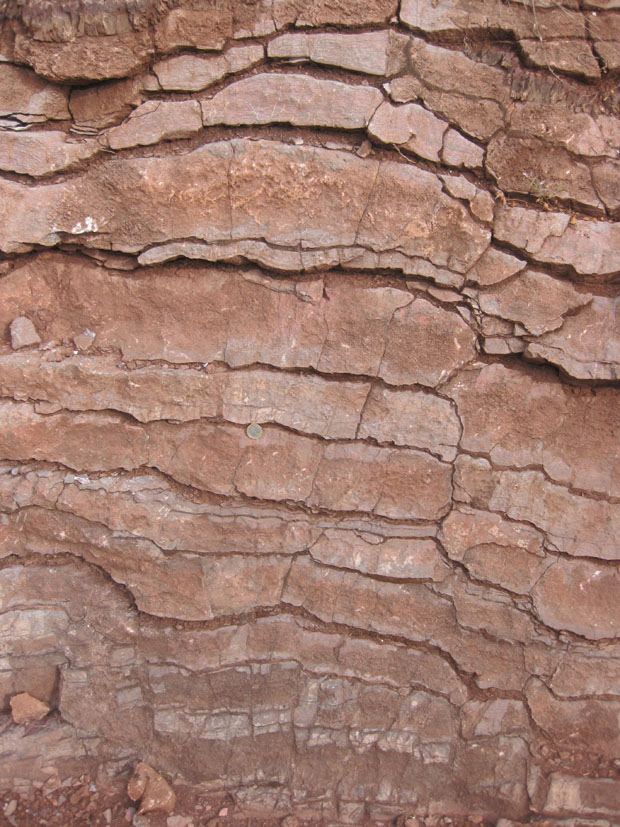


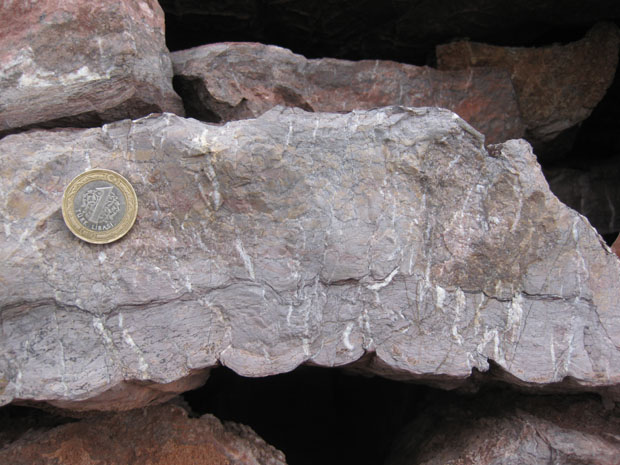



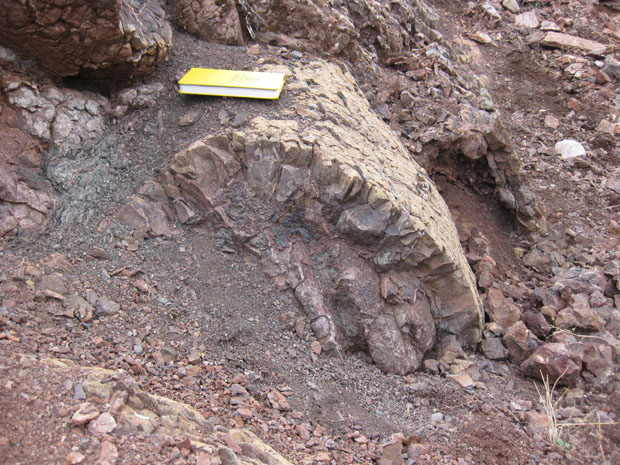
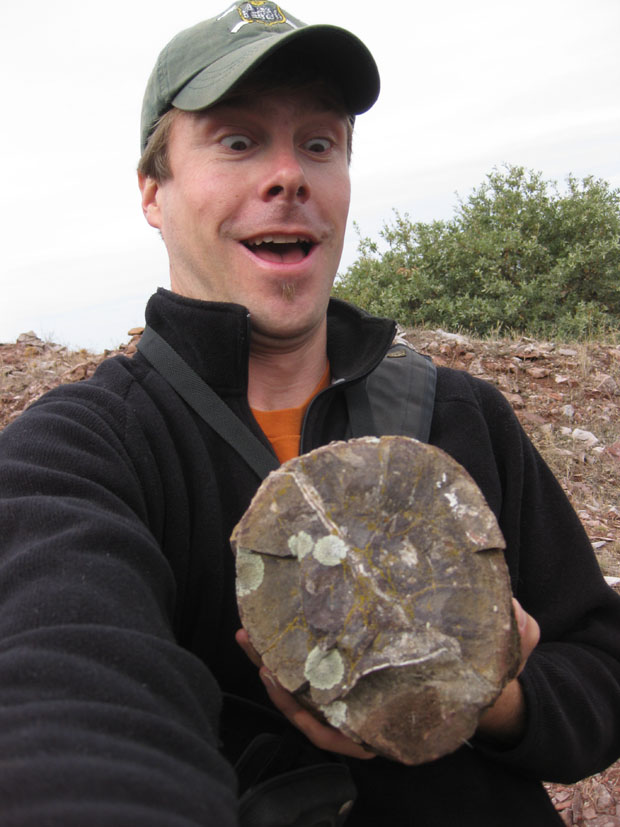
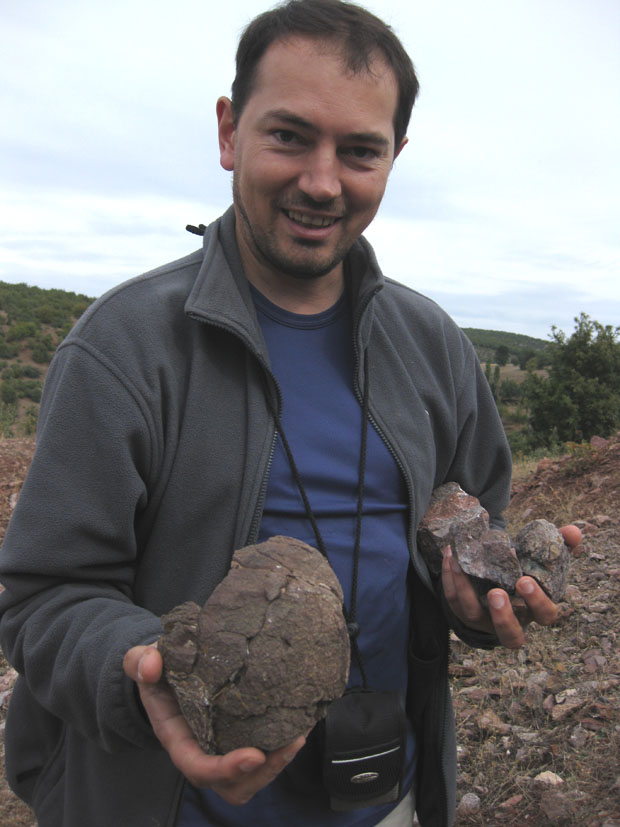

 Callan Bentley is Associate Professor of Geology at Piedmont Virginia Community College in Charlottesville, Virginia. He is a Fellow of the Geological Society of America. For his work on this blog, the National Association of Geoscience Teachers recognized him with the James Shea Award. He has also won the Outstanding Faculty Award from the State Council on Higher Education in Virginia, and the Biggs Award for Excellence in Geoscience Teaching from the Geoscience Education Division of the Geological Society of America. In previous years, Callan served as a contributing editor at EARTH magazine, President of the Geological Society of Washington and President the Geo2YC division of NAGT.
Callan Bentley is Associate Professor of Geology at Piedmont Virginia Community College in Charlottesville, Virginia. He is a Fellow of the Geological Society of America. For his work on this blog, the National Association of Geoscience Teachers recognized him with the James Shea Award. He has also won the Outstanding Faculty Award from the State Council on Higher Education in Virginia, and the Biggs Award for Excellence in Geoscience Teaching from the Geoscience Education Division of the Geological Society of America. In previous years, Callan served as a contributing editor at EARTH magazine, President of the Geological Society of Washington and President the Geo2YC division of NAGT.
[…] our mind-boggling encounter with the limestone strata turned lurid pink by their high-pressure encounter with subducti…, our band of merry geologists set off for a […]
[…] basalts, tubelike structures that result when basaltic lava erupts underwater. (You may recall that I saw some in Turkey in October.) Here’s one, with my new cm-scale pencil for […]